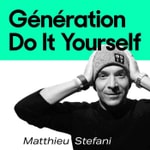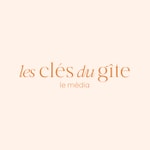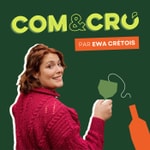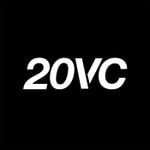A Small Voice: Conversations With Photographers – Details, episodes & analysis
Podcast details
Technical and general information from the podcast's RSS feed.
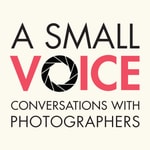
A Small Voice: Conversations With Photographers
Ben Smith
Frequency: 1 episode/69d. Total Eps: 53

Recent rankings
Latest chart positions across Apple Podcasts and Spotify rankings.
Apple Podcasts
🇬🇧 Great Britain - visualArts
29/07/2025#26🇩🇪 Germany - visualArts
29/07/2025#46🇬🇧 Great Britain - visualArts
28/07/2025#77🇩🇪 Germany - visualArts
28/07/2025#60🇨🇦 Canada - visualArts
27/07/2025#81🇬🇧 Great Britain - visualArts
27/07/2025#39🇨🇦 Canada - visualArts
26/07/2025#72🇬🇧 Great Britain - visualArts
26/07/2025#23🇨🇦 Canada - visualArts
25/07/2025#58🇬🇧 Great Britain - visualArts
25/07/2025#73
Spotify
No recent rankings available
Shared links between episodes and podcasts
Links found in episode descriptions and other podcasts that share them.
See all- https://www.instagram.com/
5028 shares
RSS feed quality and score
Technical evaluation of the podcast's RSS feed quality and structure.
See allScore global : 58%
Publication history
Monthly episode publishing history over the past years.
238 - Diana Matar
Episode 238
mercredi 28 août 2024 • Duration 01:06:00
Using photography, testimony and archive, Diana Matar's in-depth bodies of work investigate themes of history, memory and state sponsored violence. Grounded in heavy research and often spending years on a project, Diana attempts to capture the invisible traces of human history and produces installations and books that query what role aesthetics might playin the depiction of power. A graduate of the Royal College of Art, Diana has received the Deutsche Bank Pyramid Award for Fine Art; the International Fund for Documentary Photography; a Ford Foundation Grant for artists making work on history and memory; and twice been awarded an Arts Council of England Individual Artist Grant. Her work is held in public and private collections and has been exhibited in numerous institutions including Tate Modern, London; The National Museum of Singapore; Museum Folkswang, Essen, Germany; The Institut du Monde Arabe, Paris; The Museum of Contemporary Photography, Chicago; and Musee de la Photographie a Charleroi. Her monograph Evidencewas published in 2014 by Schilt Publishing Amsterdam to critical acclaim and chosen by New York Times Photography critic Teju Cole as one of two best photography books of the year. In 2019 Matar was appointed Distinguished Artist at Barnard College Columbia University, New York. In April 2024 Diana’s most recent book, My America, was published by GOST Books.
In episode 238, Diana discusses, among other things:
- Early experiences in Panama and Latin America.
- How an errand to buy a lightbulb changed everything.
- A brush with Manuel Noriega.
- How she met her Libyan husband, the writer Hisham Matar.
- Why she found doing her M.A. ‘really, really challenging’.
- Her first book project, Evidence.
- The inclusion of her own writing in the book.
- Her latest book, My America.
- Some of the key factors around the issue of police shootings.
- The complexities of the subject.
- How she has “intermalised a European sense of America.”
- Why she shot the project on her iPhone and the rules she imposed on herself.
- Whether photographs can ‘bear the burden of history.’
- What she is currently working on.
- Her reaction to the bonus questions.
“I think I internalised a European sense of America in several different ways. When I was out on the road a lot of things seemed exotic to me, things that I’d grown up with and were just part of being: the long distances; these buildings that just pop up in the middle of nowhere; the emptiness; the scale… the kind of watching of movies of what is the American west. The internalisation I think has something to do with scale. I live in London - the small streets, you’re around people all the time, and then being in this openness, which i miss and i love, but I did find it unnerving and it effected how I made the work actually.”
Become a A Small Voice podcast member here to access exclusive additional subscriber-only content and the full archive of 200+ previous episodes for £5 per month.
Subscribe to my weekly newsletter here for everything A Small Voice related and much more besides.
Follow me on Instagram here.
Build Yourself a Squarespace Website video course here.
237 - Abdul Kircher
Episode 237
mercredi 14 août 2024 • Duration 01:09:35
Abdulhamid Kircher is an artist from Queens, New York. He was born in 1996 in Berlin to German and Turkish parents, and immigrated with his mother to the United States at the age of eight. His work is a living archive of place and people, as it is also a dedication to the language of photography, the mechanics and aesthetic possibilities of the form. Through his devotion to classical forms of image making and the radical experimentation required for each of his subjects, his process bridges the idea between document and narrative. He received his BA in Culture and Media from The New School in 2018 and his MFA in Visual Arts from the University of California San Diego in 2022. Abdul currently lives and works between Berlin and Los Angeles.
Abdul’s debut photobook, Rotting From Within, was recently published by Loose Joints in June this year (2024). In it Abdul explores identity, patriarchy, generational trauma and the possibility of reconciliation in a diaristic project between Berlin and Turkey. A solo exhibition of the work is currently on show at the Carlier Gebauer gallery in Berlin until the 31st August. The 53 minute documentary film, Noch ein Kind (Still a Kid), 2024, by Abdul’s childhood friend Maxi Hachem, a Lebanese-German filmmaker based in Berlin, is also being screened as part of the exhibition. His documentary investigates the complex relationships and wounded history of Rotting from Within spanning the past three years between Berlin and Turkey.
In episode 237, Abdul discusses, among other things:
- His early life “dragging bags of weed around the house”
- The history of paternal abuse in his family
- How he ended up moving from Berlin to New York
- How he got into photography through Tumblr
- How his interest in photography drove the reconnection with his father
- Where the books title stems from
- Parallels between his mum and grandmother
- Keeping a diary since highschool
- His obsessive nature and tendency for self-flagellation
- His partner, Zoe, who contributed text to the book
- How the documentary his friend Maxi Hachem shot, Noch Ein Kind (Still A Kid)
- How the work has been received as an exhibition
- How the process of making the work may or may not have helped him
“I love it, but it’s beyond love because it feels like something that I just need to do. That’s why I was talking about photography being such an intuitive thing in my head, it’s because I don’t really have an option. I need to take these photographs, I need to make these photographs, and it’s not really something I have power over. And I think that’s the scary bit, it’s that yes I love it for what it’s allowed me to explore and allowed me to sort of open up to the world, but in that way it’s also become a burden.”
Become a A Small Voice podcast member here to access exclusive additional subscriber-only content and the full archive of 200+ previous episodes for £5 per month.
Subscribe to my weekly newsletter here for everything A Small Voice related and much more besides.
Follow me on Instagram here.
Build Yourself a Squarespace Website video course here.
228 - Valerie Belin
Episode 228
mercredi 10 avril 2024 • Duration 01:06:12
A student at the École Beaux-arts de Versailles (1983–1985), and then at the École Nationale Supérieure d’Art de Bourges (1985-1988), French artist Valerie Belin obtained the French higher national diploma in visual expression in 1988 and also holds a diploma in advanced studies (DEA) in the philosophy of art from the Université de Paris Panthéon-Sorbonne (1989).
Initially influenced by various minimalist and conceptual tendencies, Valérie became interested in the photographic medium in its own right; this is at once the subject of her work and her way of reflecting and creating. Light, matter and the “body” of things and beings in general, as well as their transformations and representations, constitute the terrain of her experiments and the world of her artistic ideas. Her work is articulated in photographic series, each one produced within the framework of a specific project.
Valérie’s work has been exhibited around the world and is held in numerous public and private collections. Winner of the Prix Pictet in 2015 (Disorder), she was made an officer of France’s Ordre des Arts et des Lettres in 2017. This same year, a touring exhibition was co-produced by the Three Shadows Photography Art Center in Beijing, the SCôP in Shanghai and the Chengdu Museum. In 2019, Valérie unveiled a major new series at the Victoria & Albert Museum in London and this year, 2024, she has been named as Master of Photography at Photo London where she will have a major career retrospective.
Valerie lives and works in Paris.
In episode 228, Valerie discusses, among other things:
- Her father being an artist at heart
- The influence of a particular teacher
- The dual influence of American minimal art and Italian baroque art
- How she discovered photography and was inspired by a misogynistic teacher
- Not photographing people initially
- Presence and absence
- Why she chose bodybuilders as her first foray into shooting people
- The theme of beauty
- How women are ‘attacked’ by stereotypes
- AI being paradoxical to what she wants to show
- The importance of Photoshop to her practice
- Where the ideas come from
- Use of comic books
- Making a living
- Recent series’ ‘Heroes’ and ‘Lady Stardust’.
Referenced:
“I think it’s still true to say I’m very close to my medium and to the hybridation, because if you think of it what is photography today when with the same camera you can make videos, you can make whatever you want? I think we are in a time when you always have a kind of superimposition in your mind, you have several channels on all the time in your mind and maybe my pictures are showing that way of thinking or way of living.”
Become a A Small Voice podcast member here to access exclusive additional subscriber-only content and the full archive of 200+ previous episodes for £5 per month.
Subscribe to my weekly newsletter here for everything A Small Voice related and much more besides.
Follow me on Instagram here.
Build Yourself a Squarespace Website video course here.
227 - Linda Troeller
Episode 227
mercredi 27 mars 2024 • Duration 01:12:10
Linda Troeller’s art projects focus on self-portraits, women's and social issues. For 20 year she lived in the legendary Chelsea Hotel in New York City, curating an exhibition for the 125th Anniversary, “Chelsea Hotel Through the Eyes of Photographers”, and publishing a monograph of her own entitled Living in the Chelsea Hotel.
Other publications include Healing Waters, The Erotic Lives of Women and her newest book of self-portraits taken over almost fifty years, Sex, Death, Transcendence, published earlier this year (2024) by TBW books. Linda was also the subject of a 2023 feature-length documentary film, also entitled Healing Waters, directed by Derek Johnson and Ali Scattergood.
She has lectured at the School of Visual Arts, NYU, Parsons, Yale, Salzburg Summer Art Academy, New Orleans Photo Alliance, and Ryerson University, Toronto and was a professor of photography at Stockton College of New Jersey, Indiana University, and Bournemouth College, England. She has a MFA, School of Art, and MS, Newhouse School, Syracuse University and BS from Reed School of Journalism, West Virginia University.
Linda lives in New York City and New Jersey.
In episode 227, Linda discusses, among other things:
- Modelling on an Ansel Adams book making workshop
- The experience of being nude in front of strangers
- The spirit of the 60s in the 70s + women’s lib
- Healing waters
- Societies expectations of women and ageing
- Her book, The Erotic Lives of Women
- Living in the Chelsea Hotel for 20 years
- How Alexander MacQueen influenced her visual palette
- How she has earned a living over the years
- Her TB/Aids project
Referenced:
- Lucien Clergue
- Eikoh Hosoe
- George Tice
- Judy Dater
- Imogen Cunningham
- Jack Welpott
- Robert Heinecken
- Lee Friedlander
- Melissa Shook
“You have to do some work to build up your self confidence, to be your most youness. ‘You’. Youness, herness, hisness, theirness, whatever it is that you wanna to be your most of you can make some strides by looking at yourself and understanding yourself. And if you want to do some more in your presentation you can. And you should.”
Become a A Small Voice podcast member here to access exclusive additional subscriber-only content and the full archive of 200+ previous episodes for £5 per month.
Subscribe to my weekly newsletter here for everything A Small Voice related and much more besides.
Follow me on Instagram here.
Build Yourself a Squarespace Website video course here.
226 - Nicole Tung
Episode 226
mercredi 13 mars 2024 • Duration 01:09:55
Nicole Tung is a freelance photojournalist. She graduated from New York University, double majoring in history and journalism, and freelances for international publications and NGOs, working primarily in the Middle East and Asia. After covering the conflicts in Libya and Syria extensively from 2011, focusing on the plight of civilians, she spent 2014 documenting the lives of Native American war veterans in the US, as well as former child soldiers in the DR Congo, the pro-democracy protests in Hong Kong, and the refugee crisis in Europe. She is also a grantee of the IWMF Grant for Women’s Stories, and a fellow of the IWMF Great Lakes Reporting Initiative (D.R. Congo, Central African Republic).
She has received multiple awards for her work from the International Photo Awards, Society of Professional Journalists, PX3, and was named PDN's 30 Under 30 Emerging Photographers (2013), among others. Nicole was given the honorable mention for the IWMF 2017 Anja Niedringhaus Awards, and awarded the 2018 James Foley Award for Conflict Reporting from the Online News Association. Her work has been exhibited + screened at the Annenberg Space for Photography, Tropenmuseum Amsterdam, Visa Pour l'Image, and most recently at the Bayeux Calvados-Normandy award for war correspondents in France (2019), with Save the Children in Hong Kong (2019), and at the Foreign Correspondents' Club in Hong Kong (2020). Nicole has also given keynote speeches and contributed to panels on photojournalism and journalist safety, at events including the International Journalism Festival (Perugia, 2019), TEDx in Sweden, the Adobe Make It Conference in Sydney, and Creative Mornings at the National Geographic Auditorium in Washington D.C., among others. She served on the board of the Frontline Freelance Register (2015) and is has undergone HEFAT training with Reporters Instructed in Saving Colleagues (RISC) and Global Journalist Security. She is based in Istanbul, Turkey.
In episode 226, Nicole discusses, among other things:
- Notable differences between the war in Ukraine and previous conflicts she has covered
- The modern use of drones in warfare
- Stories she has covered in Ukraine
- The way she works with publications
- Managing and thinking about risk
- The question of whether journalists in conflict zones are more likely to be targeted now than in the past
- Reactions to her from ordinary people in conflicts
- The question of whether photojournalism is an ‘important’ job
- The impacts of social media both negative and positive
- Approaching photojournalistic stories in a different way
- Potential ways to earn a living other than from commissions
Referenced:
“If you don’t become trapped in this idea that what you do is so precious and be real about the impact and the degree to which images and photojournalism can go, especially if your intentions are good, you’re based in reality at least. Your grounded in a certain reality where you go “I know my images aren’t going to stop a war tomorrow but at least I can be a part of that documentation process.” And to me that is important. Why shouldn’t we be showing a reflection of our collective humanity that is both ugly and beautiful at the same time? There are so many grey areas. The world is not black and white.”
Become a A Small Voice podcast member here to access exclusive additional subscriber-only content and the full archive of 200+ previous episodes for £5 per month.
Subscribe to my weekly newsletter here for everything A Small Voice related and much more besides.
Follow me on Instagram here.
Build Yourself a Squarespace Website video course here.
225 - Mitch Epstein
Episode 225
mercredi 28 février 2024 • Duration 01:22:24
Mitch Epstein helped pioneer fine-art color photography in the 1970s. His photographs are in numerous major museum collections, including New York's Museum of Modern Art, Metropolitan Museum of Art, and Whitney Museum of American Art; The J. Paul Getty Museum in Los Angeles; the San Francisco Museum of Modern Art; and the Tate Modern in London.
In October 2024, Gallerie d’Italia in Turin, Italy will present a major multi-media exhibition of Mitch’s project, Old Growth; and in September 2024, Old Growth will be shown in NYC at Yancey Richardson Gallery. Mitch’s Indian photographs and films (Salaam Bombay! and India Cabaret) were exhibited in 2022 at Les Rencontres d'Arles festival in France. Mitch has had numerous other major solo exhibitions in the USA and worldwide.
Mitch’s seventeen books, all published by Steidl Verlag, include Recreation (2022); Property Rights (2021); In India (2021); Rocks and Clouds (2017); New York Arbor (2013); Berlin (Steidl/The American Academy in Berlin 2011); American Power (2009); and Family Business (2003), which was winner of the 2004 Kraszna-Krausz Photography Book Award.
In 2020, Mitch was inducted into the National Academy of Design. In 2011, he won the Prix Pictet for American Power. Among his other awards are the Berlin Prize in Arts and Letters from the American Academy in Berlin (2008), and a Guggenheim Fellowship (2003).
Mitch has worked as a director, cinematographer, and production designer on several films, including Dad, Mississippi Masala, and Salaam Bombay!. He lives with his family in New York City.
In episode 225, Mitch discusses, among other things:
- New York
- John Szarkowski at MOMA
- Editing
- India
- Garry Winogrand and his influence
- Going to LA in ‘74
- Working on the films of his then wife Mira Nair
- Trial and error
- Family Business
- American Power
- Old Growth
Referenced:
- John Szarkowski
- Eugene Atget
- Diane Arbus
- William Eggleston
- Todd Papageorge
- Raghubir Singh
- Jonas Mekas
- Hollis Frampton
“Through disorientation, through not knowing, through being uncomfortable, things happen. And I think some of the most important periods for me in my life as an artist have been those periods where I have ultimately not known what I was doing or where I was going next. Now I’m a little bit better at just listening to the signals that come along, even though they may not give me the full-fledged answer they’ll just point in a direction. And I’m a little bit more patient with the process.”
Become a A Small Voice podcast member here to access exclusive additional subscriber-only content and the full archive of 200+ previous episodes for £5 per month.
Subscribe to my weekly newsletter here for everything A Small Voice related and much more besides.
Follow me on Instagram here.
Build Yourself a Squarespace Website video course here.
224 - Edward Burtynsky
Episode 224
mercredi 14 février 2024 • Duration 01:33:45
Edward Burtynsky is regarded as one of the world's most accomplished contemporary photographers. His remarkable photographic depictions of global industrial landscapes represent over 40 years of his dedication to bearing witness to the impact of human industry on the planet. Edward's photographs are included in the collections of over 80 major museums around the world, including the National Gallery of Canada in Ottawa; the Museum of Modern Art, the Metropolitan Museum of Art, and the Guggenheim Museum in New York; the Reina Sofia Museum in Madrid; the Tate Modern in London, and the Los Angeles County Museum of Art in California.
Edward was born in 1955 of Ukrainian heritage in St. Catharines, Ontario. He received his BAA in Photography/Media Studies from Toronto Metropolitan University (formerly Ryerson University) in 1982, and has since received both an Alumni Achievement Award (2004) and an Honorary Doctorate (2007) from his alma mater. He is still actively involved in the university community, and sits on the board of directors for The Image Centre (formerly Ryerson Image Centre).
In 1985, Edward founded Toronto Image Works, a darkroom rental facility, custom photo laboratory, digital imaging, and new media computer-training centre catering to all levels of Toronto's art community.
Early exposure to the General Motors plant and watching ships go by in the Welland Canal in Edward’s hometown helped capture his imagination for the scale of human creation, and to formulate the development of his photographic work. His imagery explores the collective impact we as a species are having on the surface of the planet — an inspection of the human systems we've imposed onto natural landscapes.
Exhibitions include: Anthropocene (2018) at the Art Gallery of Ontario and National Gallery of Canada (international touring exhibition); Water (2013) at the New Orleans Museum of Art and Contemporary Art Center in Louisiana (international touring exhibition); Oil (2009) at the Corcoran Gallery of Art in Washington D.C. (five-year international touring show), China (toured internationally from 2005 - 2008); Manufactured Landscapes at the National Gallery of Canada (toured from 2003 - 2005); and Breaking Ground produced by the Canadian Museum of Contemporary Photography (toured from 1988 - 1992). Edward's visually compelling works are currently being exhibited in solo and group exhibitions around the globe, including at London’s Saatchi Gallery where his largest solo exhibition to-date, entitled Extraction/Abstraction, is currently on show until 6th May 2024.
Edward’s distinctions include the inaugural TED Prize (which he shared with Bono and Robert Fischell), the title of Officer of the Order of Canada, and the International Center of Photography’s Infinity Award for Art. In 2018 Edward was named Photo London's Master of Photography and the Mosaic Institute's Peace Patron. In 2019 he was the recipient of the Arts & Letters Award at the Canadian Association of New York’s annual Maple Leaf Ball and the 2019 Lucie Award for Achievement in Documentary Photography. In 2020 he was awarded a Royal Photographic Society Honorary Fellowship and in 2022 was honoured with the Outstanding Contribution to Photography Award by the World Photography Organization. Most recently he was inducted into the International Photography Hall of Fame and was named the 2022 recipient for the annual Pollution Probe Award. Edward currently holds eight honorary doctorate degrees and is represented by numerous international galleries all over the world.
In episode 224, Edward discusses, among other things:
- His transition from film to digital
- Staying positive by ‘moving through grief to land on meaning’
- Making compelling images and how scale creates ambiguity
- Defining the over-riding theme of his work early on
- The environmental impact of farming
- Whether he planned his career
- Why he started a lab to finance his photography
- And how being an entrepreneur feeds into his work as an artist
- Vertical Integration
- Examples of challenging situations he has faced
- The necessity for his work to be commoditised
- His relative hope and optimism for the future through positive technology
- The importance of having a hopeful component to the work
- How he offsets his own carbon footprint
Referenced:
“The evocation of the sense of wonder and the sense of the surreal, or the improbable, or ‘what am I looking at?’, to me is interesting in a time where images are so consumed; that these are not for quick consumption they’re for… slow. And I think that when things reveal themselves slowly and in a more challenging way, they become more interesting as objects to leave in the world. That they don’t just reveal themselves immediately, you can’t just get it in one quick glance and you’re done, no, these things ask you to look at them and spend time with them. And I discover things in them sometimes that I never saw before. They’re loaded with information.”
Become a A Small Voice podcast member here to access exclusive additional subscriber-only content and the full archive of 200+ previous episodes for £5 per month.
Subscribe to my weekly newsletter here for everything A Small Voice related and much more besides.
Follow me on Instagram here.
Build Yourself a Squarespace Website video course here.
223 - Lorenzo Castore
Episode 223
mercredi 31 janvier 2024 • Duration 01:32:58
Italian photographer Lorenzo Castore’s work is characterised by long term projects focusing on his personal experience, memory and the relationship between individual stories, history and the present time.
In 1992 at the age of 19 Lorenzo moved from Rome to New York where he began to photograph in the streets. After a formative trip to India in 1997, he had a brief foray into photojournalism, covering the conflicts in Albania and Kosovo in 1999, afte which he decided to quit photojournalism and deepen his personal research.
Since then has worked extensively in Poland, Cuba and Sardinia among other places and has produced several photobooks and a short film entitled No Peace Without War.
In 2019 his lifelong work Time Maze began to be published by L’artiere in progressive chronological volumes. The first entitled A Beginning, 1994-2001 and the second Lack and Locking, 2001-2007. The next two volumes are already in the works or planned.
Lorenzo’s is represented by Galerie S. in Paris, Galerie Anne Clergue in Arles, Alessia Paladini Gallery in Milan, Spot Home Gallery in Naples and Guido Costa Projects in Turin.
In episode 223, Lorenzo discusses, among other things:
- His formative years
- His journey into photography
- His time in New York…
- …and the photograph that changed everything
- The importance of finding stories and making life an adventure
- His project Time Maze - first book A Beginning
- His brief foray into photojournalism in Kosovo
- Why he went to shoot in Poland
- HIs interest in miners
- The forthcoming sequels to A Beginning
Referenced:
- Michael Ackerman
- Anders Petersen
- Ramon Pez
- Josef Koudelka
- Saverio Costanzo
- Henri Cartier Bresson
- Georgio Mortari
- Eloi Gimeno
- Christain Cajoule
“I was postponing because of this embarrassment that I have when we say you talk about your personal life. It’s a really strange feeling, I really want to do it and at the same time I feel I have to do it very carefully.”
Become a A Small Voice podcast member here to access exclusive additional subscriber-only content and the full archive of 200+ previous episodes for £5 per month.
Subscribe to my weekly newsletter here for everything A Small Voice related and much more besides.
Follow me on Instagram here.
Build Yourself a Squarespace Website video course here.
222 - Natalie Keyssar
Episode 222
mercredi 17 janvier 2024 • Duration 01:08:28
Natalie Keyssar is a documentary photographer based in Brooklyn, New York. Her work focuses on the personal effects of political turmoil and conflict, youth culture, and migration. She has a BFA in Painting and Illustration from The Pratt Institute. Natalie has contributed to publications such as The New York Times Magazine, Time, Bloomberg Business Week, National Geographic and The New Yorker, and been awarded by organizations including the Philip Jones Griffith Award, the Aaron Siskind Foundation, PDN 30, Magenta Flash Forward, and American Photography. She has taught New Media at the International Center of Photography in New York, and has instructed at various workshops across the US and Latin America with organizations such as Foundry, Women Photograph, The Pulitzer Center on Crisis Reporting, and the IWMF. Her work has been supported by The Pulitzer Center, The Magnum Foundation, The National Geographic Society, and the IWMF among many others, and she is the winner of the 2018 ICP Infinity Emerging Photographer Award, the 2019 PH Museum Women Photographer's Grant, and is a winner of the 2023 Aperture Creator Labs Photo Fund. She is a Canon Explorer of Light and Co-Founder of the NDA Workshops series with Daniella Zalcman. She speaks fluent Spanish and is available for assignments internationally, as well as teaching and speaking engagements.
In episode 222, Natalie discusses, among other things:
- The conflict in Gaza
- How the internet and social media is clumsily creating a hive mind
- Her Jewish identity and how it shapes her perspective
- Her Ukrainian roots and covering the war in Ukraine
- Wanting her work to tell you what it feels like
- Her first trip to Venezuela and how it was love at first sight
Referenced:
- Daniella Zalcman
- Anastasia Taylor Lind
- Yelena Yemchuk
- Ben Makuch
- Stephanie Sinclair
- Christina Piaia
- Scout Tufankjian
- Katie Orlinsky
- Amie Ferris-Rotman
- Carlos Rawlins
- Ana Maria Arevalo
- Andrea Hernandez Briceño
- Lexi Grace Parra
- IWMF
“There’s this psychological cocktail of rage and grief and desire to act, and since I don’t have any actual useful skills, I’m not a doctor or psychologist or aid worker or fighter, or any of the things I sometimes wish I was, I felt the need to do something. And then there is also a totally selfish need to see it for myself. It feels compulsive. And not like in ‘this is my calling and I’m gonna save the world’, but like it’s compulsive enough to make you get on a plane to go to a country that’s quite dangerous and in horrific turmoil. ”
Become a A Small Voice podcast member here to access exclusive additional subscriber-only content and the full archive of 200+ previous episodes for £5 per month.
Subscribe to my weekly newsletter here for everything A Small Voice related and much more besides.
Follow me on Instagram here.
Build Yourself a Squarespace Website video course here.
221 - Richard Kalvar
Episode 221
mercredi 3 janvier 2024 • Duration 01:12:32
Ambiguity is at the forefront of Richard Kalvar’s photography. Richard, who describes context as the “enemy”, seeks mystery and multiple meanings through surprising framing and meticulous timing. He describes his approach as “more like poetry than photojournalism – it attacks on the emotional level.”
Richard has done extensive personal, assignment and commercial work in the United States, France, Italy, England, and Japan, among others, has published a number of solo books including Earthlings (Terriens) in 2007 and his most recent title, Selected Writings, published in 2023 by Damiani, and he has had important exhibitions in the US, France, Germany, Spain and Italy.
His work has appeared in Geo, The Paris Review, Creative Camera, Aperture, Zoom, Newsweek, and Photo, among many others. Editorial assignments and even commercial work have given Richard an additional opportunity to do personal photography. He did many documentary stories that allowed him to disengage from documentary mode when the occasion arose.
Richard joined Magnum Photos as an associate member in 1975, and became a full member two years later. He subsequently served several times as vice president, and once as president of the agency.
In episode 221, Richard discusses, among other things:
- How he ended up settling in Paris
- His introduction to photography
- How humour is an intrinsic element of his photographs
- how he is playing with things he has trouble dealing with
- Why he called up Robert Delpire
- VU agency becoming Viva
- How he ended up in Magnum
- His favourite cities to shoot in
- The legal restrictions on shooting in public in different places
- Public attitudes towards taking photographs of strangers in public
- His new book, Selected Writings
- Why his interest is in single images that stand alone
Referenced:
- Jérôme Ducrot
- André Kertesz
- HCB
- Robert Frank
- Lee Friedlander
- Elliott Erwitt
- Robert Delpire
- Viva Agency
- Guy LeQuerec
- Gilles Peress
- Mary Ellen Mark
- Alex Majoli
- Jonas Bendiksen
- Paolo Pellegrin
- Olivia Arthur
“I’m most interested in having pictures stand alone, and each one is something you can get into and is a story in itself and is also an imaginary story. I’m working with reality, that’s what’s really interesting to me and it’s also what’s interesting about photography in general, that you’re doing something that looks like real life but obviously isn’t. that’s the edge I like to work on. Where you have the impression that things are going on and not necessarily going on. If I have to tell a story, I feel a certain moral obligation to respect the truth or respect the feelings of the people that are in it. I think that’s a noble thing but for my kind of work it’s a break.”
Become a A Small Voice podcast member here to access exclusive additional subscriber-only content and the full archive of 200+ previous episodes for £5 per month.
Subscribe to my weekly newsletter here for everything A Small Voice related and much more besides.
Follow me on Instagram here.
Build Yourself a Squarespace Website video course here.
